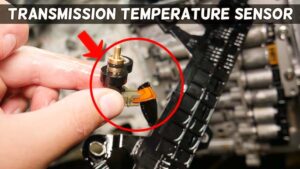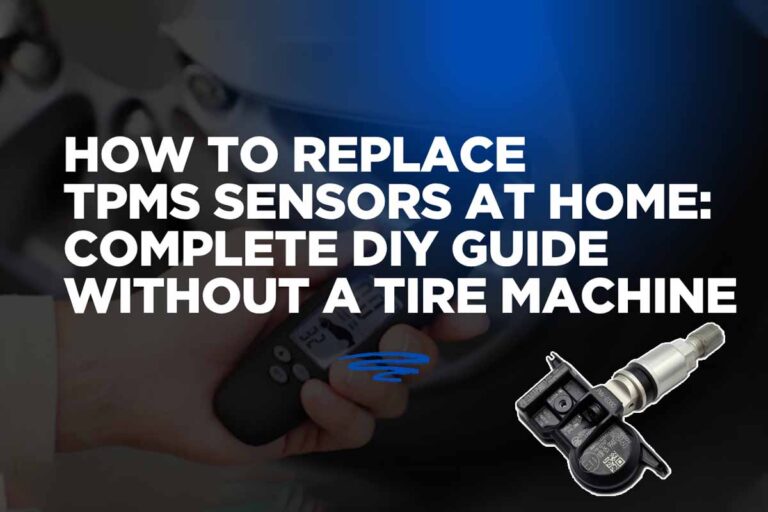How to Change a Transmission Fluid Temperature Sensor
The transmission fluid temperature (TFT) sensor is a small but important part of your car. Its job is to check how hot the transmission fluid gets while you are driving. This is important because if the fluid gets too hot, it can damage the transmission, which is very expensive to fix.When the TFT sensor works properly, it helps the car run smoothly and keeps the transmission safe. If the sensor goes bad, the car may start to have problems. You might see a warning light on the dashboard, notice the car shifts gears roughly, or find that you are using more fuel than usual. In some cases, the car might go into “limp mode,” where it moves very slowly to protect itself.
What is the Transmission Fluid Temperature Sensor?
The transmission fluid temperature (TFT) sensor is a small electronic part found in a car’s transmission system. Its main job is to measure how hot the transmission fluid gets while the car is running.
Transmission fluid is very important because it keeps the transmission cool and helps the gears shift smoothly. If the fluid gets too hot, it can cause serious damage to the transmission. The TFT sensor sends information about the fluid’s temperature to the car’s computer. If the fluid gets too hot, the computer can adjust how the transmission works or warn the driver with a dashboard light.
In short, the TFT sensor helps protect your car’s transmission and keeps your vehicle running safely and efficiently.

How to Replace a Transmission Fluid Temperature Sensor: Step-by-Step Guide
What Tools and Materials Needed
Before you start changing the transmission fluid temperature sensor, you will need a few tools and supplies.
- Wrench and socket set – These help you remove bolts and parts easily.
- Jack and jack stands – You may need to lift the car to reach the sensor safely.
- New transmission fluid temperature sensor – Make sure you have the right sensor for your car model.
- Transmission fluid – You might lose some fluid during the work, so it’s good to have extra.
- Gloves and safety glasses – These protect your hands and eyes from hot fluid or dirt.
- Towels or rags – Useful for wiping up any spills or cleaning parts.
Track Down the Transmission Sensor
The transmission fluid temperature sensor is usually located on or inside the transmission. In some cars, it might be attached to the transmission pan or built inside the valve body.
Since the exact location can be different depending on the car model, the best way to find it is to check your car’s owner’s manual. It will show you where to look. If you don’t have the manual, you can also search online by using your car’s make, model, and year.
Take your time when looking for the sensor. It might be a small part, but it plays a big role in keeping your transmission healthy!
Remove the Old Sensor
- Drain the Fluid: If any transmission fluid might spill, place a pan underneath to catch it. This step might not always be needed, but it’s good to be prepared.
- Unplug the Wiring: Carefully disconnect the wire that is connected to the old sensor. It’s usually easy to remove, just pull it out gently.
- Unscrew and Remove the Sensor: Use your wrench or socket set to unscrew the sensor. Once it’s loose, pull it out carefully. Be sure to keep track of any seals or washers, as you’ll need them for the new sensor.
Install the New Sensor
- Check the New Sensor: Before installing, make sure the new sensor is the same as the old one. Compare them to ensure they match in size and shape.
- Screw in the New Sensor: Carefully screw in the new sensor where the old one was. Make sure it’s tightened properly but not too tight to avoid damage.
- Reconnect the Wire: Plug the wire back into the new sensor. It should click or fit snugly into place.
Refill Transmission Fluid (If Needed)
- Add Fluid if Necessary: If you lost any transmission fluid while working, you’ll need to add more.
- Use the Right Fluid: Be sure to use the correct type of transmission fluid for your car. Check your car’s manual or ask an expert to ensure you’re using the right on
Test the New Sensor
- Reconnect the Battery: Once you’ve finished installing the new sensor, reconnect the car’s battery to power everything back on.
- Start the Car: Turn on the engine and let it run for a few minutes. Check if everything works as it should, especially the gear shifting and the transmission’s performance.
- Look for Leaks or Warning Lights: While the car is running, check underneath for any fluid leaks. Also, look at the dashboard for any warning lights, like the check engine light, to make sure the sensor is working properly.
Common Mistakes to Avoid
- Not Disconnecting the Battery: Always disconnect the battery before starting work to avoid electrical shocks or damage to the car’s system.
- Tightening the Sensor Too Much: When installing the new sensor, don’t over-tighten it. This can cause damage to the sensor or the transmission housing. Just tighten it securely.
- Using the Wrong Transmission Fluid: Be sure to use the correct type of transmission fluid for your car. Using the wrong fluid can cause problems with the transmission and even lead to damage
Conclusion
A properly working transmission fluid temperature sensor is essential for maintaining the health and efficiency of your vehicle’s transmission system. Replacing a faulty sensor in time can prevent serious issues like overheating, poor shifting, or long-term transmission damage. Even though the replacement process can be done at home with the right tools and guidance, it’s always wise to consult a professional mechanic if you’re unsure. Taking small steps to care for your transmission today can save you from expensive repairs in the future and ensure your vehicle continues to run smoothly for years to come.






